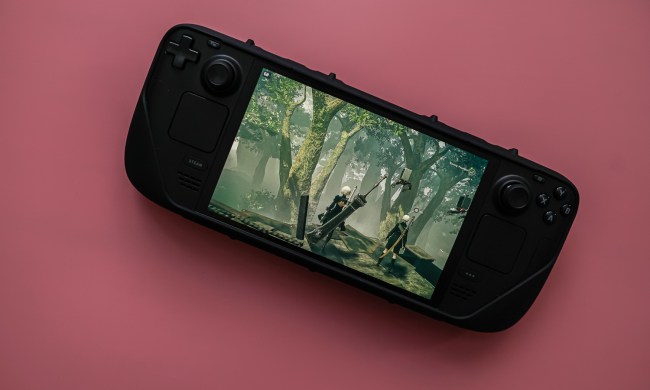Valve has made a significant update to its Proton compatibility layer, which is the basis of the Linux-based SteamOS operating system on the Steam Deck. The update brings several improvements and bug fixes, but it also adds support for Nvidia’s coveted DLSS 3 Frame Generation.
The update for Proton Experimental rolled out on November 12, and it was spotted by Wccftech. Proton is the bedrock for gaming on Linux, and up to this point, Nvidia users haven’t had access to some of the best features of Team Green’s latest graphics cards on Linux. The latest update not only supports DLSS 3 Frame Generation, but also Nvidia’s Optical Flow API. Optical Flow is critical for DLSS 3 Frame Generation, though the dedicated hardware for the feature has been around since Nvidia’s Turing GPUs.
In addition to DLSS 3, the update fixes issues with games like Skull and Bones, Final Fantasy XVI, and Doom Eternal, among dozens of other fixes. It also adds support for games like Total War: Shogun 2, Warhammer 40K: Space Marine 2, and Sniper Elite: Nazi Zombie Army 2.
Proton may be a vital component of the Steam Deck, but it extends far beyond just Valve’s handheld. That is to say, this update doesn’t say much about the future of the Steam Deck. There’s some interesting context surrounding this update, however.
Nvidia is reportedly working on an Arm-based PC platform that combines a GPU and CPU into a single chip, and it will apparently be ready to launch next year. Up to this point, AMD hardware has dominated handhelds like the Steam Deck and Asus ROG Ally X, and Intel has dipped its toes in with the MSI Claw. But we haven’t seen an Nvidia-based handheld yet.
If we see an Nvidia system-on-a-chip (SoC) capable of features like DLSS 3 Frame Generation, that would make for a compelling handheld gaming PC. If nothing else, adding support for DLSS 3 in Proton gives Linux gamers more options to play, and it also lays the groundwork if we ever see an Nvidia-based handheld in the future that leverages Proton.
Before rushing to conclusions, we’re reading several layers into a relatively simple update here. Valve has said it’s waiting for a signficant hardware improvement before releasing the Steam Deck 2, and although it’s possible that design could use an Nvidia chip, there’s no reason to believe Valve will break from AMD at this point.





